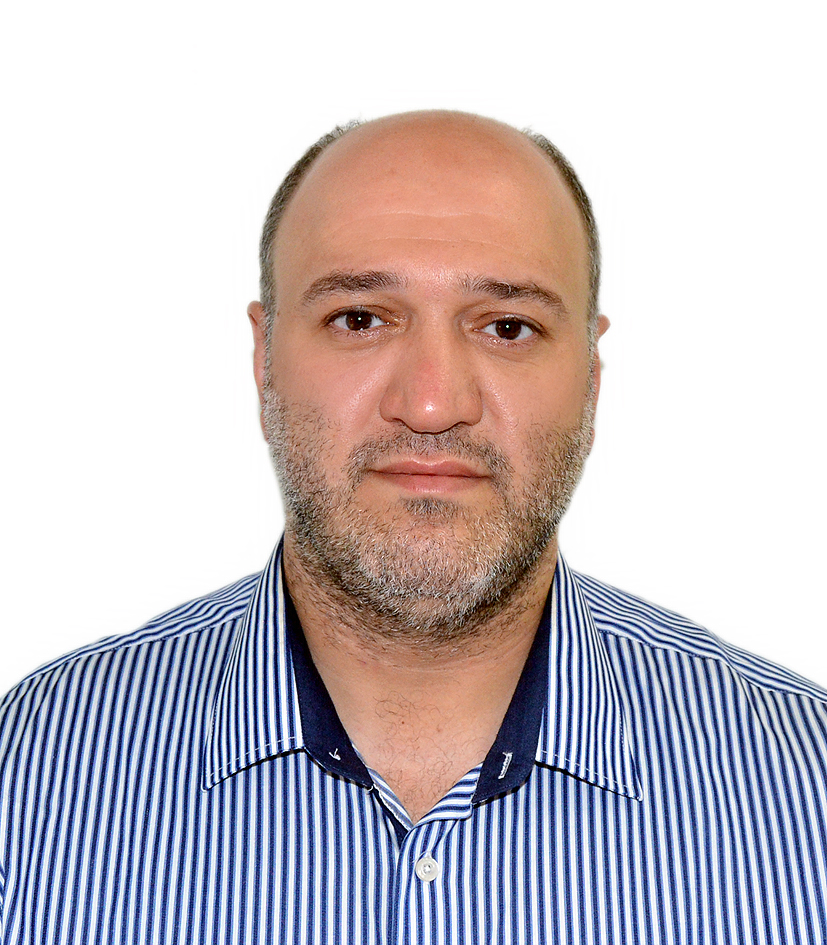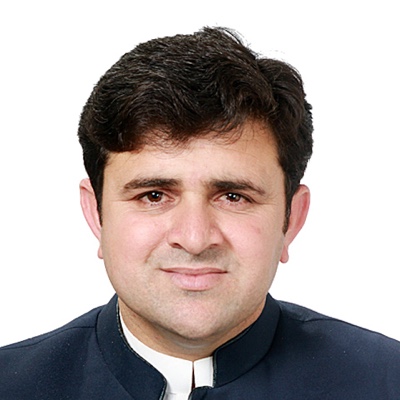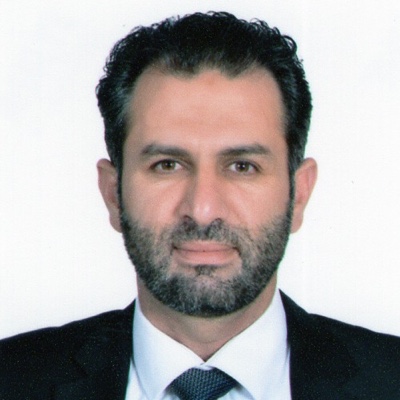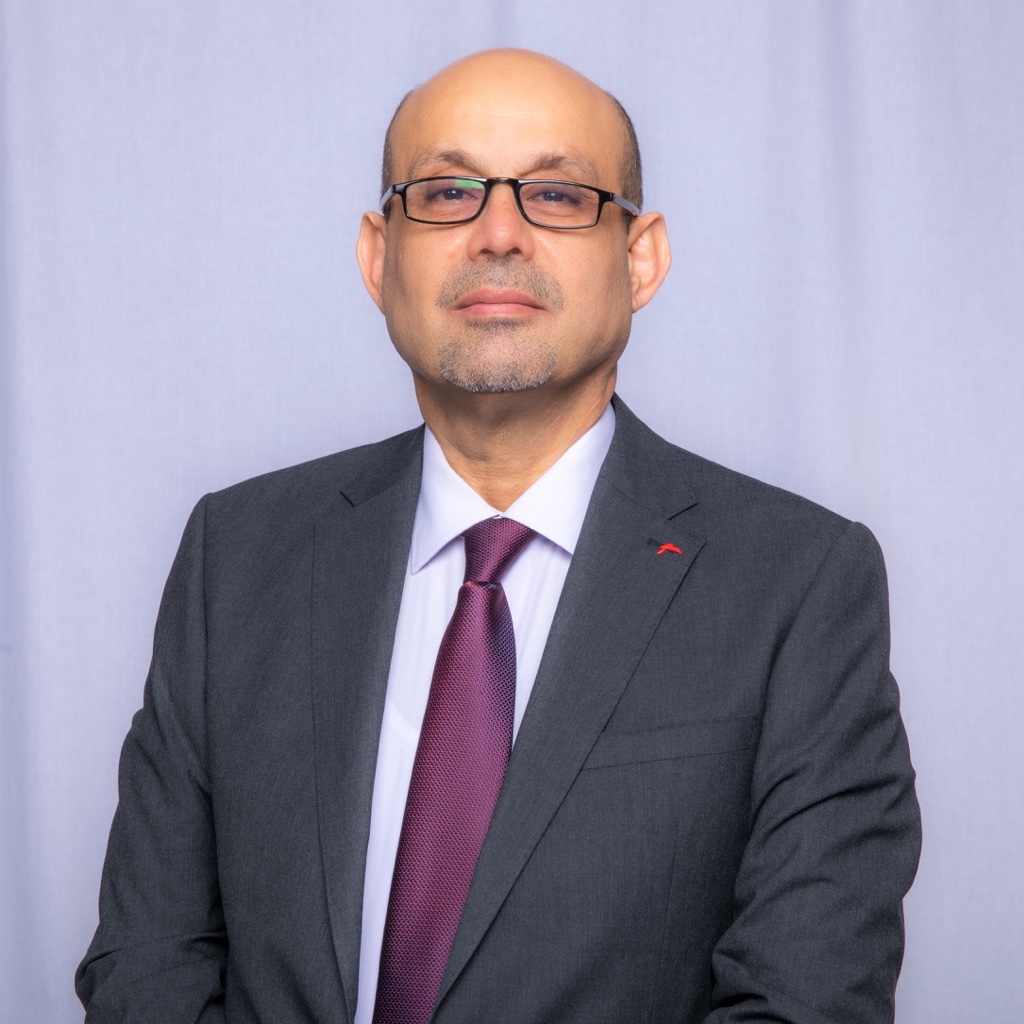Artificial Intelligence Research Center (AIRC)
Introduction
The Artificial Intelligence Research Center (AIRC) at Ajman University was set-up in 2020 to strengthen the research related to Artificial Intelligence (AI) conducted by our faculty and students associated with the AI Graduate Program. The objective of this Center is to nurture and promote research, innovation and entrepreneurship in the area of Artificial Intelligence.
The AIRC consolidates our experience in the fields of AI, Robotics, evolutionary computation and Biomedical Data Science.
The aim of the AIRC is to achieve its objectives by fostering collaboration between professional research groups in the areas of AI, robotics, and biomedical engineering.
AIRC objectives
- Conduct cutting-edge AI related research in cooperation with multiple AU colleges
- To engage in impactful projects with the industry and the government including AI technology transfer
- To collaborate with external entities and partners in research projects and teaching
- To offer state-of-the-art courses, workshops & training for both the AU community and the wider society
- To provide a platform for incubators that supports AI-based entrepreneurships
- To conduct outreach programs for students to facilitate AI skill development
- To provide a research environment for graduate students to conduct research in cooperation with affiliated faculty and staff members
- To organize local/international events such as AI Hackathon
- Disseminate expertise and knowledge in the fields of AI, ML, and robotics
Key areas of research in AIRC
Evolutionary Computation:
Evolutionary Computation uses AI-enabled optimization algorithms to study evolution in nature. It has the potential to help us find answers to a myriad of complex problems in various scientific and medical fields.
At AIRC, we conduct high quality research in the field of Evolutionary Computation by addressing several complex real-world problems using optimization algorithms.
Machine Learning and Deep Learning:
Machine learning provides systems with the ability to learn and improve from experience without being explicitly programmed. Machine learning focuses on developing computer programs that can access data and use it to learn for themselves.
The learning process begins with data acquisition and collection to find specific patterns in the data and make better decisions. Machine learning's primary aim is to make computers learn automatically without human intervention.
Data Science:
Data Science is an interdisciplinary field that utilizes computing technology to derive obvious and non-obvious relationships in data by developing the appropriate scientific algorithms and implement these methods to extract useful knowledge or insights from the data.
Data science is one of the most intensively researched areas within the field of AI and machine learning. The research carried out by AIRC will be at the cutting edge of new developments in this field.
Apart from the above, the AIRC also focusses on research in the areas of Robotics & Machine Vision and Natural Language Processing.
AIRC’s Vision & Mission
AIRC’s Vision
To become a leading center for AI-related research in the Arab region by making impactful research contributions in this field.
Our Mission
To nurture talent and an ecosystem of innovation in all areas related to AI and Machine Learning, with the active involvement and cooperation of industry and society in the UAE. To conduct impactful applied research in AI and ML and to foster strong industry academic synergy for AI adoption.
Research Groups and areas of interest.
The following research groups within the AIRC will conduct fundamental and applied research in the respective subject areas:
1- Deep Learning/Machine Learning research group.
2- Data Science research group.
3- Robotics and Machine Vision research group.
4- NLP and Speech Recognition research group.
5- Evolutionary computation research group
AIRC Team Members
Head of AIRC AIRC Full Members













AIRC Affiliated Members












Interdisciplinary Affiliated Members




|
Name |
Affiliation |
AU Title |
|
Dr. Apurva Mishra |
College of Dentistry, Ajman University | Assistant Professor |
|
Dr. Mohammed A. Awadallah |
Al Aqsa University, Palestine |
Adjunct Research Associate |
|
Prof. Qammer H. Abbasi |
University of Glasgow, UK |
Adjunct Research Professor |
|
Dr. Mohamed Abd Elaziz |
Zagazig University, Egypt |
Adjunct Research Associate |
|
Name |
Affiliation |
AU Title |
| Eng. Sana Ali Ahmed Abouelnour | Ajman University (Master of Science in Artificial Intelligence) | Research Associate |
| Eng. Leen Mohammad Adnan Alakhras | Ajman University (Master of Science in Artificial Intelligence) | Research Associate |
| Eng. Soud Asaad Soud Alhazba | Ajman University (Master of Science in Artificial Intelligence) | Research Associate |
AIRC Student Members
|
Name |
Affiliation and Position |
| Lamees Mohammad Wajeh Dalbah | Ajman University (Master of Science in Artificial Intelligence) |
| Shaimaa Mahmood Mounir Kouka | Ajman University (Master of Science in Artificial Intelligence) |
| Aneesa Ibrahim Ali Al-Redhaei | Ajman University (Master of Science in Artificial Intelligence) |
| Khaled Mahfouz | Ajman University (Master of Science in Artificial Intelligence) |
| Nabia Khalid | Ajman University (Master of Science in Artificial Intelligence) |
| Haseebullah Jumakhan | Ajman University (Master of Science in Artificial Intelligence) |
AIRC Publications
- Abasi, A. K., Makhadmeh, S. N., Al-Betar, M. A., Alomari, O. A., Awadallah, M. A., Alyasseri, Z. A. A., . . . Hadjouni, M. (2022). Lemurs optimizer: A new metaheuristic algorithm for global optimization. Applied Sciences (Switzerland), 12(19) doi:10.3390/app121910057
- Abbas, F., Yasmin, M., Fayyaz, M., Elaziz, M. A., Lu, S., & Abd El-Latif, A. A. (2021). Gender classification using proposed CNN-based model and ant colony optimization. Mathematics, 9(19) doi:10.3390/math9192499
- Abd Elaziz, M., Abualigah, L., Ibrahim, R. A., & Attiya, I. (2021). IoT workflow scheduling using intelligent arithmetic optimization algorithm in fog computing. Computational Intelligence and Neuroscience, 2021 doi:10.1155/2021/9114113
- Abd Elaziz, M., Abualigah, L., Issa, M., & Abd El-Latif, A. A. (2023). Optimal parameters extracting of fuel cell based on gorilla troops optimizer. Fuel, 332 doi:10.1016/j.fuel.2022.126162
- Abd Elaziz, M., Abu-Donia, H. M., Hosny, R. A., Hazae, S. L., & Ibrahim, R. A. (2022). Improved evolutionary-based feature selection technique using extension of knowledge based on the rough approximations. Information Sciences, 594, 76-94. doi:10.1016/j.ins.2022.01.026
- Abd Elaziz, M., Almodfer, R., Ahmadianfar, I., Ibrahim, I. A., Mudhsh, M., Abualigah, L., . . . Yousri, D. (2022). Static models for implementing photovoltaic panels characteristics under various environmental conditions using improved gradient-based optimizer. Sustainable Energy Technologies and Assessments, 52 doi:10.1016/j.seta.2022.102150
- Abd Elaziz, M., Al-qaness, M. A. A., Dahou, A., Ibrahim, R. A., & El-Latif, A. A. A. (2023). Intrusion detection approach for cloud and IoT environments using deep learning and capuchin search algorithm. Advances in Engineering Software, 176 doi:10.1016/j.advengsoft.2022.103402
- Abd Elaziz, M., Chelloug, S., Alduailij, M., & Al-qaness, M. A. A. (2023). Boosted reptile search algorithm for engineering and optimization problems. Applied Sciences (Switzerland), 13(5) doi:10.3390/app13053206
- Abd Elaziz, M., Dahou, A., Alsaleh, N. A., Elsheikh, A. H., Saba, A. I., & Ahmadein, M. (2021). Boosting covid-19 image classification using mobilenetv3 and aquila optimizer algorithm. Entropy, 23(11) doi:10.3390/e23111383
- Abd Elaziz, M., Dahou, A., Orabi, D. A., Alshathri, S., Soliman, E. M., & Ewees, A. A. (2023). A hybrid multitask learning framework with a fire hawk optimizer for arabic fake news detection. Mathematics, 11(2) doi:10.3390/math11020258
- Abd Elaziz, M., Ghoneimi, A., Elsheikh, A. H., Abualigah, L., Bakry, A., & Nabih, M. (2022). Predicting shale volume from seismic traces using modified random vector functional link based on transient search optimization model: A case study from netherlands north sea. Natural Resources Research, 31(3), 1775-1791. doi:10.1007/s11053-022-10049-4
- Abd Elaziz, M., Mabrouk, A., Dahou, A., & Chelloug, S. A. (2022). Medical image classification utilizing ensemble learning and levy flight-based honey badger algorithm on 6G-enabled internet of things. Computational Intelligence and Neuroscience, 2022 doi:10.1155/2022/5830766
- Abd Elaziz, M., Ouadfel, S., Abd El-Latif, A. A., & Ali Ibrahim, R. (2022). Feature selection based on modified bio-inspired atomic orbital search using arithmetic optimization and opposite-based learning. Cognitive Computation, 14(6), 2274-2295. doi:10.1007/s12559-022-10022-6
- Abd Elaziz, M., Ouadfel, S., & Ibrahim, R. A. (2023). Boosting capuchin search with stochastic learning strategy for feature selection. Neural Computing and Applications, doi:10.1007/s00521-023-08400-8
- Abd Elaziz, M., Ewees, A. A., Yousri, D., Abualigah, L., & Al-qaness, M. A. A. (2022). Modified marine predators algorithm for feature selection: Case study metabolomics. Knowledge and Information Systems, 64(1), 261-287. doi:10.1007/s10115-021-01641-w
- Abdalkareem, Z. A., Al-Betar, M. A., Amir, A., Ehkan, P., Hammouri, A. I., & Salman, O. H. (2022). Discrete flower pollination algorithm for patient admission scheduling problem. Computers in Biology and Medicine, 141 doi:10.1016/j.compbiomed.2021.105007
- Abdalkareem, Z. A., Amir, A., Al-Betar, M. A., Ekhan, P., & Hammouri, A. I. (2021). Healthcare scheduling in optimization context: A review. Health and Technology, 11(3), 445-469. doi:10.1007/s12553-021-00547-5
- Abdi Alkareem Alyasseri, Z., Alomari, O. A., Al-Betar, M. A., Awadallah, M. A., Hameed Abdulkareem, K., Abed Mohammed, M., . . . Rho, S. (2022). EEG channel selection using multiobjective cuckoo search for person identification as protection system in healthcare applications. Computational Intelligence and Neuroscience, 2022 doi:10.1155/2022/5974634
- Abed-alguni, B. H., Alawad, N. A., Al-Betar, M. A., & Paul, D. (2022). Opposition-based sine cosine optimizer utilizing refraction learning and variable neighborhood search for feature selection. Applied Intelligence, doi:10.1007/s10489-022-04201-z
- Abu Doush, I., Al-Betar, M. A., Awadallah, M. A., Alyasseri, Z. A. A., Makhadmeh, S. N., & El-Abd, M. (2022). Island neighboring heuristics harmony search algorithm for flow shop scheduling with blocking. Swarm and Evolutionary Computation, 74 doi:10.1016/j.swevo.2022.101127
- Abu Doush, I., Awadallah, M. A., Al-Betar, M. A., Alomari, O. A., Makhadmeh, S. N., Abasi, A. K., & Alyasseri, Z. A. A. (2023). Archive-based coronavirus herd immunity algorithm for optimizing weights in neural networks. Neural Computing and Applications, doi:10.1007/s00521-023-08577-y
- Abualigah, L., Almotairi, K. H., Al-qaness, M. A. A., Ewees, A. A., Yousri, D., Elaziz, M. A., & Nadimi-Shahraki, M. H. (2022). Efficient text document clustering approach using multi-search arithmetic optimization algorithm. Knowledge-Based Systems, 248 doi:10.1016/j.knosys.2022.108833
- Abualigah, L., Almotairi, K. H., Elaziz, M. A., Shehab, M., & Altalhi, M. (2022). Enhanced flow direction arithmetic optimization algorithm for mathematical optimization problems with applications of data clustering. Engineering Analysis with Boundary Elements, 138, 13-29. doi:10.1016/j.enganabound.2022.01.014
- Abualigah, L., Al-Okbi, N. K., Elaziz, M. A., & Houssein, E. H. (2022). Boosting marine predators algorithm by salp swarm algorithm for multilevel thresholding image segmentation. Multimedia Tools and Applications, 81(12), 16707-16742. doi:10.1007/s11042-022-12001-3
- Abualigah, L., Diabat, A., Altalhi, M., & Elaziz, M. A. (2022). Improved gradual change-based harris hawks optimization for real-world engineering design problems. Engineering with Computers, doi:10.1007/s00366-021-01571-9
- Abualigah, L., Diabat, A., Svetinovic, D., & Elaziz, M. A. (2022). Boosted harris hawks gravitational force algorithm for global optimization and industrial engineering problems. Journal of Intelligent Manufacturing, doi:10.1007/s10845-022-01921-4
- Abualigah, L., Elaziz, M. A., Khasawneh, A. M., Alshinwan, M., Ibrahim, R. A., Al-qaness, M. A. A., . . . Gandomi, A. H. (2022). Meta-heuristic optimization algorithms for solving real-world mechanical engineering design problems: A comprehensive survey, applications, comparative analysis, and results. Neural Computing and Applications, 34(6), 4081-4110. doi:10.1007/s00521-021-06747-4
- Abualigah, L., Elaziz, M. A., Sumari, P., Geem, Z. W., & Gandomi, A. H. (2022). Reptile search algorithm (RSA): A nature-inspired meta-heuristic optimizer. Expert Systems with Applications, 191 doi:10.1016/j.eswa.2021.116158
- Abualigah, L., Elaziz, M. A., Sumari, P., Khasawneh, A. M., Alshinwan, M., Mirjalili, S., . . . Gandomi, A. H. (2022). Black hole algorithm: A comprehensive survey. Applied Intelligence, 52(10), 11892-11915. doi:10.1007/s10489-021-02980-5
- Abualigah, L., Elaziz, M. A., Yousri, D., Al-qaness, M. A. A., Ewees, A. A., & Zitar, R. A. (2022). Augmented arithmetic optimization algorithm using opposite-based learning and lévy flight distribution for global optimization and data clustering. Journal of Intelligent Manufacturing, doi:10.1007/s10845-022-02016-w
- Abualigah, L., Ewees, A. A., Al-qaness, M. A. A., Elaziz, M. A., Yousri, D., Ibrahim, R. A., & Altalhi, M. (2022). Boosting arithmetic optimization algorithm by sine cosine algorithm and levy flight distribution for solving engineering optimization problems. Neural Computing and Applications, 34(11), 8823-8852. doi:10.1007/s00521-022-06906-1
- Abualigah, L., Zitar, R. A., Almotairi, K. H., Hussein, A. M., Elaziz, M. A., Nikoo, M. R., & Gandomi, A. H. (2022). Wind, solar, and photovoltaic renewable energy systems with and without energy storage optimization: A survey of advanced machine learning and deep learning techniques. Energies, 15(2) doi:10.3390/en15020578
- Abu-Doush, I., Ahmed, B., Awadallah, M. A., Al-Betar, M. A., & Rababaah, A. R. (2023). Enhancing multilayer perceptron neural network using archive-based harris hawks optimizer to predict gold prices. Journal of King Saud University - Computer and Information Sciences, 35(5) doi:10.1016/j.jksuci.2023.101557
- Adel, H., Dahou, A., Mabrouk, A., Elaziz, M. A., Kayed, M., El-Henawy, I. M., . . . Ali, A. A. (2022). Improving crisis events detection using DistilBERT with hunger games search algorithm. Mathematics, 10(3) doi:10.3390/math10030447
- Ahmed, I., Dahou, A., Chelloug, S. A., Al-Qaness, M. A. A., & Elaziz, M. A. (2022). Feature selection model based on gorilla troops optimizer for intrusion detection systems. Journal of Sensors, 2022 doi:10.1155/2022/6131463
- Ahmed, I. E., Mehdi, R., & Mohamed, E. A. (2023). The role of artificial intelligence in developing a banking risk index: An application of adaptive neural network-based fuzzy inference system (ANFIS). Artificial Intelligence Review, doi:10.1007/s10462-023-10473-9
- Aighuraibawi, A. H. B., Abdullah, R., Manickam, S., & Alyasseri, Z. A. A. (2021). Detection of ICMPv6-based DDoS attacks using anomaly based intrusion detection system: A comprehensive review. International Journal of Electrical and Computer Engineering, 11(6), 5216-5228. doi:10.11591/ijece.v11i6.pp5216-5228
- Akbari, M. A., Zare, M., Azizipanah-abarghooee, R., Mirjalili, S., & Deriche, M. (2022). The cheetah optimizer: A nature-inspired metaheuristic algorithm for large-scale optimization problems. Scientific Reports, 12(1) doi:10.1038/s41598-022-14338-z
- Al Shinwan, M., Abualigah, L., Huy, T. -., Shdefat, A. Y., Altalhi, M., Kim, C., . . . Kwak, K. S. (2022). An efficient 5G data plan approach based on partially distributed mobility architecture. Sensors, 22(1) doi:10.3390/s22010349
- Alanazi, M., Alanazi, A., Akbari, M. A., Deriche, M., & Memon, Z. A. (2023). A non-simulation-based linear model for analytical reliability evaluation of radial distribution systems considering renewable DGs. Applied Energy, 342 doi:10.1016/j.apenergy.2023.121153
- Alani, S., Zakaria, Z., Saeidi, T., Ahmad, A., Imran, M. A., & Abbasi, Q. H. (2021). Microwave imaging of breast skin utilizing elliptical uwb antenna and reverse problems algorithm. Micromachines, 12(6) doi:10.3390/mi12060647
- Al-Betar, M. A. (2021). Island-based harmony search algorithm for non-convex economic load dispatch problems. Journal of Electrical Engineering and Technology, 16(4), 1985-2015. doi:10.1007/s42835-021-00758-w
- Al-Betar, M. A., Abasi, A. K., Al-Naymat, G., Arshad, K., & Makhadmeh, S. N. (2023). Optimization of scientific publications clustering with ensemble approach for topic extraction. Scientometrics, 128(5), 2819-2877. doi:10.1007/s11192-023-04674-w
- Al-Betar, M. A., Awadallah, M. A., Doush, I. A., Alomari, O. A., Abasi, A. K., Makhadmeh, S. N., & Alyasseri, Z. A. A. (2022). Boosting the training of neural networks through hybrid metaheuristics. Cluster Computing, doi:10.1007/s10586-022-03708-x
- Al-Betar, M. A., Awadallah, M. A., Makhadmeh, S. N., Doush, I. A., Zitar, R. A., Alshathri, S., & Abd Elaziz, M. (2023). A hybrid harris hawks optimizer for economic load dispatch problems. Alexandria Engineering Journal, 64, 365-389. doi:10.1016/j.aej.2022.09.010
- Al-Betar, M. A., Awadallah, M. A., Zitar, R. A., & Assaleh, K. (2022). Economic load dispatch using memetic sine cosine algorithm. Journal of Ambient Intelligence and Humanized Computing, doi:10.1007/s12652-022-03731-1
- Aldeeb, B. A., Azmi Al-Betar, M., Md Norwawi, N., Alissa, K. A., Alsmadi, M. K., Hazaymeh, A. A., & Alzaqebah, M. (2022). Hybrid intelligent water drops algorithm for examination timetabling problem. Journal of King Saud University - Computer and Information Sciences, 34(8), 4847-4859. doi:10.1016/j.jksuci.2021.06.016
- Alfarhan, M., Deriche, M., & Maalej, A. (2022). Robust concurrent detection of salt domes and faults in seismic surveys using an improved UNet architecture. IEEE Access, 10, 39424-39435. doi:10.1109/ACCESS.2020.3043973
- Al-Fawa'reh, M., Al-Fayoumi, M., Nashwan, S., & Fraihat, S. (2022). Cyber threat intelligence using PCA-DNN model to detect abnormal network behavior. Egyptian Informatics Journal, 23(2), 173-185. doi:10.1016/j.eij.2021.12.001
- Alhaj, Y. A., Dahou, A., Al-Qaness, M. A. A., Abualigah, L., Abbasi, A. A., Almaweri, N. A. O., . . . Damaševičius, R. (2022). A novel text classification technique using improved particle swarm optimization: A case study of arabic language. Future Internet, 14(7) doi:10.3390/fi14070194
- Alharbi, K. A. M., Riasat, S., Ramzan, M., & Kadry, S. (2023). Role of surface catalyzed reaction in the flow of temperature-dependent viscosity fluid over a rotating disk. Numerical Heat Transfer; Part A: Applications, doi:10.1080/10407782.2023.2173344
- Alhawari, A. R. H., Majeed, S. F., Saeidi, T., Mumtaz, S., Alghamdi, H., Hindi, A. T., . . . Abbasi, Q. H. (2021). Compact elliptical uwb antenna for underwater wireless communications. Micromachines, 12(4) doi:10.3390/mi12040411
- Alhawari, A. R. H., Saeidi, T., Almawgani, A. H. M., Hindi, A. T., Alghamdi, H., Alsuwian, T., . . . Imran, M. A. (2021). Wearable metamaterial dual-polarized high isolation uwb mimo vivaldi antenna for 5g and satellite communications. Micromachines, 12(12) doi:10.3390/mi12121559
- Alhijawi, B., & AL-Naymat, G. (2022). Novel positive multi-layer graph based method for collaborative filtering recommender systems. Journal of Computer Science and Technology, 37(4), 975-990. doi:10.1007/s11390-021-0420-2
- Ali, S. M., Sovuthy, C., Noghanian, S., Ali, Z., Abbasi, Q. H., Imran, M. A., . . . Socheatra, S. (2021). Design and evaluation of a flexible dual-band meander line monopole antenna for on-and off-body healthcare applications. Micromachines, 12(5) doi:10.3390/mi12050475
- Alian, M., & Al-Naymat, G. (2022). Questions clustering using canopy-K-means and hierarchical-K-means clustering. International Journal of Information Technology (Singapore), 14(7), 3793-3802. doi:10.1007/s41870-022-01012-w
- Aliyu, F., Sheltami, T., Deriche, M., & Nasser, N. (2022). Human immune-based intrusion detection and prevention system for fog computing. Journal of Network and Systems Management, 30(1) doi:10.1007/s10922-021-09616-6
- AlJarrah, M. N., Yaseen, Q. M., & Mustafa, A. M. (2022). A context-aware android malware detection approach using machine learning. Information (Switzerland), 13(12) doi:10.3390/info13120563
- Alkareem Alyasseri, Z. A., Al-Betar, M. A., Awadallah, M. A., Makhadmeh, S. N., Abasi, A. K., Doush, I. A., & Alomari, O. A. (2022). A hybrid flower pollination with β-hill climbing algorithm for global optimization. Journal of King Saud University - Computer and Information Sciences, 34(8), 4821-4835. doi:10.1016/j.jksuci.2021.06.015
- Alkhraisat, H., Dalbah, L. M., Al-Betar, M. A., Awadallah, M. A., Assaleh, K., & Deriche, M. (2023). Size optimization of truss structures using improved grey wolf optimizer. IEEE Access, 11, 13383-13397. doi:10.1109/ACCESS.2023.3243164
- Alkoffash, M. S., Awadallah, M. A., Alweshah, M., Zitar, R. A., Assaleh, K., & Al-Betar, M. A. (2021). A non-convex economic load dispatch using hybrid salp swarm algorithm. Arabian Journal for Science and Engineering, 46(9), 8721-8740. doi:10.1007/s13369-021-05646-z
- Almadhor, A., Irfan, R., Gao, J., Saleem, N., Tayyab Rauf, H., & Kadry, S. (2023). E2E-DASR: End-to-end deep learning-based dysarthric automatic speech recognition. Expert Systems with Applications, 222 doi:10.1016/j.eswa.2023.119797
- Almodfer, R., Abd Elaziz, M., Alshathri, S., Abualigah, L., Mudhsh, M., Shahzad, K., & Issa, M. (2022). Improving parameter estimation of fuel cell using honey badger optimization algorithm. Frontiers in Energy Research, 10 doi:10.3389/fenrg.2022.875332
- Almodfer, R., Mudhsh, M., Alshathri, S., Yousri, D., Abualigah, L., Hassan, O. F., & Abd Elaziz, M. (2022). Chaotic honey badger algorithm for single and double photovoltaic cell/module. Frontiers in Energy Research, 10 doi:10.3389/fenrg.2022.1011887
- Almodfer, R., Mudhsh, M., Chelloug, S., Shehab, M., Abualigah, L., & Abd Elaziz, M. (2022). Quantum mutation reptile search algorithm for global optimization and data clustering. Human-Centric Computing and Information Sciences, 12 doi:10.22967/HCIS.2022.12.030
- Almodfer, R., Zayed, M. E., Elaziz, M. A., Aboelmaaref, M. M., Mudhsh, M., & Elsheikh, A. H. (2022). Modeling of a solar-powered thermoelectric air-conditioning system using a random vector functional link network integrated with jellyfish search algorithm. Case Studies in Thermal Engineering, 31 doi:10.1016/j.csite.2022.101797
- Almomani, A., Al-Nawasrah, A., Alauthman, M., Al-Betar, M. A., & Meziane, F. (2021). Botnet detection used fast-flux technique, based on adaptive dynamic evolving spiking neural network algorithm. International Journal of Ad Hoc and Ubiquitous Computing, 36(1), 50-65. doi:10.1504/IJAHUC.2021.112981
- Alnaimy, M. A., Shahin, S. A., Afifi, A. A., Ewees, A. A., Junakova, N., Balintova, M., & Abd Elaziz, M. (2022). Spatio prediction of soil capability modeled with modified RVFL using aptenodytes forsteri optimization and digital soil assessment technique. Sustainability (Switzerland), 14(22) doi:10.3390/su142214996
- Al-Naymat, G., Hussain, H., Al-Kasassbeh, M., & Al-Dmour, N. (2021). Accurate detection of network anomalies within SNMP-MIB data set using deep learning. International Journal of Computer Applications in Technology, 66(1), 74-85. doi:10.1504/IJCAT.2021.119606
- Al-Okaily, A., Teoh, A. P., Al-Okaily, M., Iranmanesh, M., & Al-Betar, M. A. (2023). The efficiency measurement of business intelligence systems in the big data-driven economy: A multidimensional model. Information Discovery and Delivery, doi:10.1108/IDD-01-2022-0008
- Alomari, O. A., Makhadmeh, S. N., Al-Betar, M. A., Alyasseri, Z. A. A., Doush, I. A., Abasi, A. K., . . . Zitar, R. A. (2021). Gene selection for microarray data classification based on gray wolf optimizer enhanced with TRIZ-inspired operators. Knowledge-Based Systems, 223 doi:10.1016/j.knosys.2021.107034
- Al-Qaness, M. A. A., Dahou, A., Elaziz, M. A., & Helmi, A. M. (2023). Multi-ResAtt: Multilevel residual network with attention for human activity recognition using wearable sensors. IEEE Transactions on Industrial Informatics, 19(1), 144-152. doi:10.1109/TII.2022.3165875
- Al-qaness, M. A. A., Dahou, A., Ewees, A. A., Abualigah, L., Huai, J., Abd Elaziz, M., & Helmi, A. M. (2023). ResInformer: Residual transformer-based artificial time-series forecasting model for PM2.5 concentration in three major chinese cities. Mathematics, 11(2) doi:10.3390/math11020476
- Al-qaness, M. A. A., Ewees, A. A., Abualigah, L., AlRassas, A. M., Thanh, H. V., & Abd Elaziz, M. (2022). Evaluating the applications of dendritic neuron model with metaheuristic optimization algorithms for crude-oil-production forecasting. Entropy, 24(11) doi:10.3390/e24111674
- Al-qaness, M. A. A., Ewees, A. A., Elaziz, M. A., & Samak, A. H. (2022). Wind power forecasting using optimized dendritic neural model based on seagull optimization algorithm and aquila optimizer. Energies, 15(24) doi:10.3390/en15249261
- Al-qaness, M. A. A., Ewees, A. A., Fan, H., Abualigah, L., & Elaziz, M. A. (2022). Boosted ANFIS model using augmented marine predator algorithm with mutation operators for wind power forecasting. Applied Energy, 314 doi:10.1016/j.apenergy.2022.118851
- Al-qaness, M. A. A., Ewees, A. A., Fan, H., Abualigah, L., Elsheikh, A. H., & Abd Elaziz, M. (2023). Wind power prediction using random vector functional link network with capuchin search algorithm. Ain Shams Engineering Journal, doi:10.1016/j.asej.2022.102095
- Al-qaness, M. A. A., Ewees, A. A., Fan, H., AlRassas, A. M., & Abd Elaziz, M. (2022). Modified aquila optimizer for forecasting oil production. Geo-Spatial Information Science, 25(4), 519-535. doi:10.1080/10095020.2022.2068385
- Al-qaness, M. A. A., Ewees, A. A., Thanh, H. V., AlRassas, A. M., & Abd Elaziz, M. (2022). An optimized neuro-fuzzy system using advance nature-inspired aquila and salp swarm algorithms for smart predictive residual and solubility carbon trapping efficiency in underground storage formations. Journal of Energy Storage, 56 doi:10.1016/j.est.2022.106150
- Al-qaness, M. A. A., Ewees, A. A., Thanh, H. V., AlRassas, A. M., Dahou, A., & Elaziz, M. A. (2023). Predicting CO2 trapping in deep saline aquifers using optimized long short-term memory. Environmental Science and Pollution Research, 30(12), 33780-33794. doi:10.1007/s11356-022-24326-5
- Al-qaness, M. A. A., Helmi, A. M., Dahou, A., & Elaziz, M. A. (2022). The applications of metaheuristics for human activity recognition and fall detection using wearable sensors: A comprehensive analysis. Biosensors, 12(10) doi:10.3390/bios12100821
- Al-Quraan, M., Mohjazi, L., Bariah, L., Centeno, A., Zoha, A., Arshad, K., . . . Muhammad, M. (2023). Edge-native intelligence for 6G communications driven by federated learning: A survey of trends and challenges. IEEE Transactions on Emerging Topics in Computational Intelligence, , 1-23. doi:10.1109/TETCI.2023.3251404
- AlRassas, A. M., Al-qaness, M. A. A., Ewees, A. A., Ren, S., Sun, R., Pan, L., & Abd Elaziz, M. (2022). Advance artificial time series forecasting model for oil production using neuro fuzzy-based slime mould algorithm. Journal of Petroleum Exploration and Production Technology, 12(2), 383-395. doi:10.1007/s13202-021-01405-w
- Alsadoon, A., Al-Naymat, G., Osman, A. H., Alsinglawi, B., Maabreh, M., & Islam, M. R. (2023). DFCV: A framework for evaluation deep learning in early detection and classification of lung cancer. Multimedia Tools and Applications, doi:10.1007/s11042-023-15238-8
- Alshathri, S., Abd Elaziz, M., Yousri , D., Hassan , O. F., & Ibrahim , R. A. (2022). Quantum chaotic honey badger algorithm for feature selection. Electronics (Switzerland), 11(21) doi:10.3390/electronics11213463
- Al-Shourbaji, I., Helian, N., Sun, Y., Alshathri, S., & Elaziz, M. A. (2022). Boosting ant colony optimization with reptile search algorithm for churn prediction. Mathematics, 10(7) doi:10.3390/math10071031
Al-Shourbaji, I., Kachare, P. H., Alshathri, S., Duraibi, S., Elnaim, B., & Elaziz, M. A. (2022). An efficient parallel reptile search algorithm and snake optimizer approach for feature selection. Mathematics, 10(13) doi:10.3390/math10132351 - Alsoruji, G. S., Sadoun, A. M., Elaziz, M. A., Al-Betar, M. A., Abdallah, A. W., & Fathy, A. (2023). On the prediction of the mechanical properties of ultrafine grain al-TiO2 nanocomposites using a modified long-short term memory model with beluga whale optimizer. Journal of Materials Research and Technology, 23, 4075-4088. doi:10.1016/j.jmrt.2023.01.212
- Alweshah, M., Alkhalaileh, S., Al-Betar, M. A., & Bakar, A. A. (2022). Coronavirus herd immunity optimizer with greedy crossover for feature selection in medical diagnosis. Knowledge-Based Systems, 235 doi:10.1016/j.knosys.2021.107629
- Alyasseri, Z. A. A., Al-Betar, M. A., Doush, I. A., Awadallah, M. A., Abasi, A. K., Makhadmeh, S. N., . . . Zitar, R. A. (2022). Review on COVID-19 diagnosis models based on machine learning and deep learning approaches. Expert Systems, 39(3) doi:10.1111/exsy.12759
- Alyasseri, Z. A. A., Alomari, O. A., Al-Betar, M. A., Makhadmeh, S. N., Doush, I. A., Awadallah, M. A., . . . Elnagar, A. (2022). Recent advances of bat-inspired algorithm, its versions and applications. Neural Computing and Applications, 34(19), 16387-16422. doi:10.1007/s00521-022-07662-y
- Alyasseri, Z. A. A., Alomari, O. A., Makhadmeh, S. N., Mirjalili, S., Al-Betar, M. A., Abdullah, S., . . . Abasi, A. K. (2022). EEG channel selection for person identification using binary grey wolf optimizer. IEEE Access, 10, 10500-10513. doi:10.1109/ACCESS.2021.3135805
- Alyasseri, Z. A. A., Alomari, O. A., Papa, J. P., Al-Betar, M. A., Abdulkareem, K. H., Mohammed, M. A., . . . Khuwuthyakorn, P. (2022). EEG channel selection based user identification via improved flower pollination algorithm. Sensors, 22(6) doi:10.3390/s22062092
- Alyasseri, Z. A. A., Khader, A. T., Al-Betar, M. A., Yang, X. -., Mohammed, M. A., Abdulkareem, K. H., . . . Razzak, I. (2023). Multi-objective flower pollination algorithm: A new technique for EEG signal denoising. Neural Computing and Applications, 35(11), 7943-7962. doi:10.1007/s00521-021-06757-2
- Aman, W., Rahman, M. M. U., Abbas, H. T., Khalid, M. A., Imran, M. A., Alomainy, A., & Abbasi, Q. H. (2021). Securing the insecure: A first-line-of-defense for body-centric nanoscale communication systems operating in thz band. Sensors, 21(10) doi:10.3390/s21103534
- Aman, W., Ur Rahman, M. M., Ansari, S., Nasir, A. A., Qaraqe, K., Imran, M. A., & Abbasi, Q. H. (2021). On the effective capacity of IRS-assisted wireless communication. Physical Communication, 47 doi:10.1016/j.phycom.2021.101339
- Amin, A., Mahmood, A., Khan, A. R., Arshad, K., Assaleh, K., & Zoha, A. (2023). A two-stage multi-agent EV charging coordination scheme for maximizing grid performance and customer satisfaction. Sensors, 23(6) doi:10.3390/s23062925
- Amin, J., Anjum, M. A., Sharif, M., Kadry, S., & Kim, J. (2022). Explainable neural network for classification of cotton leaf diseases. Agriculture (Switzerland), 12(12) doi:10.3390/agriculture12122029
- Amin, J., Anjum, M. A., Zahra, R., Sharif, M. I., Kadry, S., & Sevcik, L. (2023). Pest localization using YOLOv5 and classification based on quantum convolutional network. Agriculture (Switzerland), 13(3) doi:10.3390/agriculture13030662
- Amran, G. A., Wang, S., Al-qaness, M. A. A., Mohsan, S. A. H., Abbas, R., Ghaleb, E., . . . Abd Elaziz, M. (2022). Efficient and secure WiFi signal booster via unmanned aerial vehicles WiFi repeater based on intelligence based localization swarm and blockchain. Micromachines, 13(11) doi:10.3390/mi13111924
- Anter, A. M., Abd Elaziz, M., & Zhang, Z. (2022). Real-time epileptic seizure recognition using bayesian genetic whale optimizer and adaptive machine learning. Future Generation Computer Systems, 127, 426-434. doi:10.1016/j.future.2021.09.032
- Arif, Z. H., Mahmoud, M. A., Abdulkareem, K. H., Kadry, S., Mohammed, M. A., Al-Mhiqani, M. N., . . . Nedoma, J. (2022). Adaptive deep learning detection model for multi-foggy images. International Journal of Interactive Multimedia and Artificial Intelligence, 7(7), 26-37. doi:10.9781/ijimai.2022.11.008
- Arya, C., Diwakar, M., Singh, P., Singh, V., Kadry, S., & Kim, J. (2023). Multi-document news web page summarization using content extraction and lexical chain based key phrase extraction. Mathematics, 11(8) doi:10.3390/math11081762
- Attaullah, H., Anjum, A., Kanwal, T., Malik, S. U. R., Asheralieva, A., Malik, H., . . . Imran, M. A. (2021). F-classify: Fuzzy rule based classification method for privacy preservation of multiple sensitive attributes. Sensors, 21(14) doi:10.3390/s21144933
- Attiya, I., Abualigah, L., Alshathri, S., Elsadek, D., & Elaziz, M. A. (2022). Dynamic jellyfish search algorithm based on simulated annealing and disruption operators for global optimization with applications to cloud task scheduling. Mathematics, 10(11) doi:10.3390/math10111894
- Attiya, I., Abualigah, L., Elsadek, D., Chelloug, S. A., & Abd Elaziz, M. (2022). An intelligent chimp optimizer for scheduling of IoT application tasks in fog computing. Mathematics, 10(7) doi:10.3390/math10071100
- Attiya, I., Elaziz, M. A., Abualigah, L., Nguyen, T. N., & El-Latif, A. A. A. (2022). An improved hybrid swarm intelligence for scheduling IoT application tasks in the cloud. IEEE Transactions on Industrial Informatics, 18(9), 6264-6272. doi:10.1109/TII.2022.3148288
- Awad, M., Fraihat, S., Salameh, K., & Al Redhaei, A. (2022). Examining the suitability of NetFlow features in detecting IoT network intrusions. Sensors, 22(16) doi:10.3390/s22166164
- Awadallah, M. A., Al-Betar, M. A., Braik, M. S., Hammouri, A. I., Doush, I. A., & Zitar, R. A. (2022). An enhanced binary rat swarm optimizer based on local-best concepts of PSO and collaborative crossover operators for feature selection. Computers in Biology and Medicine, 147 doi:10.1016/j.compbiomed.2022.105675
- Awadallah, M. A., Al-Betar, M. A., Doush, I. A., Makhadmeh, S. N., & Al-Naymat, G. (2023). Recent versions and applications of sparrow search algorithm. Archives of Computational Methods in Engineering, doi:10.1007/s11831-023-09887-z
- Awadallah, M. A., Al-Betar, M. A., Doush, I. A., Makhadmeh, S. N., Alyasseri, Z. A. A., Abasi, A. K., & Alomari, O. A. (2022). CCSA: Cellular crow search algorithm with topological neighborhood shapes for optimization. Expert Systems with Applications, 194 doi:10.1016/j.eswa.2021.116431
- Awadallah, M. A., Hammouri, A. I., Al-Betar, M. A., Braik, M. S., & Elaziz, M. A. (2022). Binary horse herd optimization algorithm with crossover operators for feature selection. Computers in Biology and Medicine, 141 doi:10.1016/j.compbiomed.2021.105152
- Bassoy, S., Jaber, M., Onireti, O., & Imran, M. A. (2021). Radio & BH load-aware multi-objective clustering in multi-cell MIMO cooperative networks. IEEE Transactions on Vehicular Technology, 70(5), 4585-4600. doi:10.1109/TVT.2021.3070992
- Braik, M., Awadallah, M., Al-Betar, M. A., & Al-Hiary, H. (2023). Enhanced whale optimization algorithm-based modeling and simulation analysis for industrial system parameter identification. Journal of Supercomputing, doi:10.1007/s11227-023-05215-1
- Braik, M., Hammouri, A., Atwan, J., Al-Betar, M. A., & Awadallah, M. A. (2022). White shark optimizer: A novel bio-inspired meta-heuristic algorithm for global optimization problems. Knowledge-Based Systems, 243 doi:10.1016/j.knosys.2022.108457
- Braik, M. S., Awadallah, M. A., Al-Betar, M. A., Hammouri, A. I., & Zitar, R. A. (2023). A non-convex economic load dispatch problem using chameleon swarm algorithm with roulette wheel and levy flight methods. Applied Intelligence, doi:10.1007/s10489-022-04363-w
- Dahou, A., Al-qaness, M. A. A., Abd Elaziz, M., & Helmi, A. (2022). Human activity recognition in IoHT applications using arithmetic optimization algorithm and deep learning. Measurement: Journal of the International Measurement Confederation, 199 doi:10.1016/j.measurement.2022.111445
- Dahou, A., Chelloug, S. A., Alduailij, M., & Elaziz, M. A. (2023). Improved feature selection based on chaos game optimization for social internet of things with a novel deep learning model. Mathematics, 11(4) doi:10.3390/math11041032
- Dahou, A., Mabrouk, A., Ewees, A. A., Gaheen, M. A., & Abd Elaziz, M. (2023). A social media event detection framework based on transformers and swarm optimization for public notification of crises and emergency management. Technological Forecasting and Social Change, 192 doi:10.1016/j.techfore.2023.122546
- Dalbah, L. M., Al-Betar, M. A., Awadallah, M. A., & Zitar, R. A. (2022). A modified coronavirus herd immunity optimizer for capacitated vehicle routing problem. Journal of King Saud University - Computer and Information Sciences, 34(8), 4782-4795. doi:10.1016/j.jksuci.2021.06.013
- Dashtipour, K., Taylor, W., Ansari, S., Gogate, M., Zahid, A., Sambo, Y., . . . Imran, M. A. (2021). Public perception of the fifth generation of cellular networks (5G) on social media. Frontiers in Big Data, 4 doi:10.3389/fdata.2021.640868
- Diwakar, M., Singh, P., Singh, R., Sisodia, D., Singh, V., Maurya, A., . . . Sevcik, L. (2023). Multimodality medical image fusion using clustered dictionary learning in non-subsampled shearlet transform. Diagnostics, 13(8) doi:10.3390/diagnostics13081395
- Durrani, U. K., Al Naymat, G., Ayoubi, R. M., Kamal, M. M., & Hussain, H. (2022). Gamified flipped classroom versus traditional classroom learning: Which approach is more efficient in business education? International Journal of Management Education, 20(1) doi:10.1016/j.ijme.2021.100595
- El Shinawi, A., Ibrahim, R. A., Abualigah, L., Zelenakova, M., & Elaziz, M. A. (2021). Enhanced adaptive neuro-fuzzy inference system using reptile search algorithm for relating swelling potentiality using index geotechnical properties: A case study at el sherouk city, egypt. Mathematics, 9(24) doi:10.3390/math9243295
- Elaziz, M. A., Abdelrahman, N. S., Hassan, N. A., & Mohamed, M. O. (2022). Discrete generalized inverted exponential distribution: Case study color image segmentation. Mathematical Problems in Engineering, 2022 doi:10.1155/2022/3029932
- Elaziz, M. A., Abualigah, L., Yousri, D., Oliva, D., Al-Qaness, M. A. A., Nadimi-Shahraki, M. H., . . . Ibrahim, R. A. (2021). Boosting atomic orbit search using dynamic-based learning for feature selection. Mathematics, 9(21) doi:10.3390/math9212786
- Elaziz, M. A., Ahmadein, M., Ataya, S., Alsaleh, N., Forestiero, A., & Elsheikh, A. H. (2022). A quantum-based chameleon swarm for feature selection. Mathematics, 10(19) doi:10.3390/math10193606
- Elaziz, M. A., Dahou, A., El-Sappagh, S., Mabrouk, A., & Gaber, M. M. (2022). AHA-AO: Artificial hummingbird algorithm with aquila optimization for efficient feature selection in medical image classification. Applied Sciences (Switzerland), 12(19) doi:10.3390/app12199710
- Elaziz, M. A., Dahou, A., Mabrouk, A., Ibrahim, R. A., & Aseeri, A. O. (2023). Medical image classifications for 6G IoT-enabled smart health systems. Diagnostics, 13(5) doi:10.3390/diagnostics13050834
- Elaziz, M. A., Ewees, A. A., Al-qaness, M. A. A., Abualigah, L., & Ibrahim, R. A. (2022). Sine–Cosine-barnacles algorithm optimizer with disruption operator for global optimization and automatic data clustering. Expert Systems with Applications, 207 doi:10.1016/j.eswa.2022.117993
- Elaziz, M. A., Ewees, A. A., Al-qaness, M. A. A., Alshathri, S., & Ibrahim, R. A. (2022). Feature selection for high dimensional datasets based on quantum-based dwarf mongoose optimization. Mathematics, 10(23) doi:10.3390/math10234565
- Elgamal, Z., Sabri, A. Q. M., Tubishat, M., Tbaishat, D., Makhadmeh, S. N., & Alomari, O. A. (2022). Improved reptile search optimization algorithm using chaotic map and simulated annealing for feature selection in medical field. IEEE Access, 10, 51428-51446. doi:10.1109/ACCESS.2022.3174854
- Elsheikh, A. H., El-Said, E. M. S., Abd Elaziz, M., Fujii, M., & El-Tahan, H. R. (2023). Water distillation tower: Experimental investigation, economic assessment, and performance prediction using optimized machine-learning model. Journal of Cleaner Production, 388 doi:10.1016/j.jclepro.2023.135896
- Essa, F. A., Elaziz, M. A., Al-Betar, M. A., & Elsheikh, A. H. (2023). Performance prediction of a reverse osmosis unit using an optimized long short-term memory model by hummingbird optimizer. Process Safety and Environmental Protection, 169, 93-106. doi:10.1016/j.psep.2022.10.071
- Ewees, A. A., Abualigah, L., Yousri, D., Sahlol, A. T., Al-Qaness, M. A. A., Alshathri, S., & Elaziz, M. A. (2021). Modified artificial ecosystem-based optimization for multilevel thresholding image segmentation. Mathematics, 9(19) doi:10.3390/math9192363
- Ewees, A. A., Algamal, Z. Y., Abualigah, L., Al-Qaness, M. A. A., Yousri, D., Ghoniem, R. M., & Elaziz, M. A. (2022). A cox proportional-hazards model based on an improved aquila optimizer with whale optimization algorithm operators. Mathematics, 10(8) doi:10.3390/math10081273
- Ewees, A. A., Al-qaness, M. A. A., Abualigah, L., Algamal, Z. Y., Oliva, D., Yousri, D., & Elaziz, M. A. (2023). Enhanced feature selection technique using slime mould algorithm: A case study on chemical data. Neural Computing and Applications, 35(4), 3307-3324. doi:10.1007/s00521-022-07852-8
- Ewees, A. A., Al-qaness, M. A. A., Abualigah, L., & Elaziz, M. A. (2022). HBO-LSTM: Optimized long short term memory with heap-based optimizer for wind power forecasting. Energy Conversion and Management, 268 doi:10.1016/j.enconman.2022.116022
- Ewees, A. A., Al-Qaness, M. A. A., Abualigah, L., Oliva, D., Algamal, Z. Y., Anter, A. M., . . . Abd Elaziz, M. (2021). Boosting arithmetic optimization algorithm with genetic algorithm operators for feature selection: Case study on cox proportional hazards model. Mathematics, 9(18) doi:10.3390/math9182321
- Fargues, M., Kadry, S., Lawal, I. A., Yassine, S., & Rauf, H. T. (2023). Automated analysis of open-ended students’ feedback using sentiment, emotion, and cognition classifications. Applied Sciences (Switzerland), 13(4) doi:10.3390/app13042061
- Fatani, A., Dahou, A., Al-Qaness, M. A. A., Lu, S., & Elaziz, M. A. (2022). Advanced feature extraction and selection approach using deep learning and aquila optimizer for iot intrusion detection system. Sensors, 22(1) doi:10.3390/s22010140
- Fayyaz, A. M., Raza, M., Sharif, M., Shah, J. H., Kadry, S., & Martínez, O. S. (2023). An integrated framework for COVID-19 classification based on ensembles of deep features and entropy coded GLEO feature selection. International Journal of Uncertainty, Fuzziness and Knowldege-Based Systems, 31(1), 163-185. doi:10.1142/S0218488523500101
- Feng, Z., Ren, A., Chen, Z., Zahid, A., Ye, L., Imran, M. A., & Abbasi, Q. H. (2022). Portable and feasible device to evaluate the technique of swimming practitioners. IEEE Access, 10, 88093-88104. doi:10.1109/ACCESS.2022.3200743
- Fraihat, M., Fraihat, S., Awad, M., & AlKasassbeh, M. (2022). An efficient enhanced k-means clustering algorithm for best offer prediction in telecom. International Journal of Electrical and Computer Engineering, 12(3), 2931-2943. doi:10.11591/ijece.v12i3.pp2931-2943
- Ghasemi, M., Akbari, M. -., Jun, C., Bateni, S. M., Zare, M., Zahedi, A., . . . Chau, K. -. (2022). Circulatory system based optimization (CSBO): An expert multilevel biologically inspired meta-heuristic algorithm. Engineering Applications of Computational Fluid Mechanics, 16(1), 1483-1525. doi:10.1080/19942060.2022.2098826
- Gu, Z., Xiong, G., Fu, X., Mohamed, A. W., Al-Betar, M. A., Chen, H., & Chen, J. (2023). Extracting accurate parameters of photovoltaic cell models via elite learning adaptive differential evolution. Energy Conversion and Management, 285 doi:10.1016/j.enconman.2023.116994
- Habuza, T., Zaki, N., Mohamed, E. A., & Statsenko, Y. (2022). Deviation from model of normal aging in alzheimer's disease: Application of deep learning to structural MRI data and cognitive tests. IEEE Access, 10, 53234-53249. doi:10.1109/ACCESS.2022.3174601
- Helmi, A. M., Al-qaness, M. A. A., Dahou, A., & Abd Elaziz, M. (2023). Human activity recognition using marine predators algorithm with deep learning. Future Generation Computer Systems, 142, 340-350. doi:10.1016/j.future.2023.01.006
- Hosny, R. A., Abd Elaziz, M., & Ali Ibrahim, R. (2022). Enhanced feature selection based on integration containment neighborhoods rough set approximations and binary honey badger optimization. Computational Intelligence and Neuroscience, 2022 doi:10.1155/2022/3991870
- Ibrahim, R. A., Abualigah, L., Ewees, A. A., Al-Qaness, M. A. A., Yousri, D., Alshathri, S., & Elaziz, M. A. (2021). An electric fish-based arithmetic optimization algorithm for feature selection. Entropy, 23(9) doi:10.3390/e23091189
- Ibrahim, R. A., Yousri, D., Abd Elaziz, M., Alshathri, S., & Attiya, I. (2021). Fractional calculus-based slime mould algorithm for feature selection using rough set. IEEE Access, 9, 131625-131636. doi:10.1109/ACCESS.2021.3111121
- Iqbal, N., Deriche, M., AlRegib, G., & Khan, S. (2023). Blind curvelet-based denoising of seismic surveys in coherent and incoherent noise environments. Arabian Journal for Science and Engineering, doi:10.1007/s13369-023-07836-3
- Islam, N., Riasat, S., Ramzan, M., Ali S Ghazwani, H., Ali Pasha, A., Kadry, S., & Eldin, S. M. (2023). Thermal efficiency appraisal of hybrid nanocomposite flow over an inclined rotating disk exposed to solar radiation with arrhenius activation energy: Thermal efficiency appraisal of hybrid nanocomposite flow. Alexandria Engineering Journal, 68, 721-732. doi:10.1016/j.aej.2022.12.029
- Issa, M., Helmi, A. M., Elsheikh, A. H., & Abd Elaziz, M. (2022). A biological sub-sequences detection using integrated BA-PSO based on infection propagation mechanism: Case study COVID-19. Expert Systems with Applications, 189 doi:10.1016/j.eswa.2021.116063
- Jha, N., Shankar, P. R., Al-Betar, M. A., Mukhia, R., Hada, K., & Palaian, S. (2022). Undergraduate medical students’ and interns’ knowledge and perception of artificial intelligence in medicine. Advances in Medical Education and Practice, 13, 927-937. doi:10.2147/AMEP.S368519
- Kadry, S. (2023). Three-dimensional reconstruction system in pulmonary broncho vascular surgery using AI. EBioMedicine, 89 doi:10.1016/j.ebiom.2023.104495
- Kadry, S., Srivastava, G., Rajinikanth, V., Rho, S., & Kim, Y. (2022). Tuberculosis detection in chest radiographs using spotted hyena algorithm optimized deep and handcrafted features. Computational Intelligence and Neuroscience, 2022 doi:10.1155/2022/9263379
- Kamran, S., Safavi, H. R., Golmohammadi, M. H., Rezaei, F., Elaziz, M. A., Forestiero, A., & Lu, S. (2022). Maximizing sustainability in reservoir operation under climate change using a novel adaptive accelerated gravitational search algorithm. Water (Switzerland), 14(6) doi:10.3390/w14060905
- Kassaymeh, S., Abdullah, S., Al-Betar, M. A., & Alweshah, M. (2022). Salp swarm optimizer for modeling the software fault prediction problem. Journal of King Saud University - Computer and Information Sciences, 34(6), 3365-3378. doi:10.1016/j.jksuci.2021.01.015
- Kassaymeh, S., Abdullah, S., Al-Betar, M. A., Alweshah, M., Al-Laham, M., & Othman, Z. (2022). Self-adaptive salp swarm algorithm for optimization problems. Soft Computing, 26(18), 9349-9368. doi:10.1007/s00500-022-07280-9
- Kassaymeh, S., Abdullah, S., Al-Laham, M., Alweshah, M., Al-Betar, M. A., & Othman, Z. (2021). Salp swarm optimizer for modeling software reliability prediction problems. Neural Processing Letters, 53(6), 4451-4487. doi:10.1007/s11063-021-10607-6
- Kassaymeh, S., Al-Laham, M., Al-Betar, M. A., Alweshah, M., Abdullah, S., & Makhadmeh, S. N. (2022). Backpropagation neural network optimization and software defect estimation modelling using a hybrid salp swarm optimizer-based simulated annealing algorithm. Knowledge-Based Systems, 244 doi:10.1016/j.knosys.2022.108511
- Kassaymeh, S., Alweshah, M., Al-Betar, M. A., Hammouri, A. I., & Al-Ma’aitah, M. A. (2023). Software effort estimation modeling and fully connected artificial neural network optimization using soft computing techniques. Cluster Computing, doi:10.1007/s10586-023-03979-y
- Khan, Z. A., Sherazi, H. H. R., Ali, M., Imran, M. A., Ur Rehman, I., & Chakarbarti, P. (2021). Designing a wind energy harvester for connected vehicles in green cities. Energies, 14(17) doi:10.3390/en14175408
- Khurma, R. A., Aljarah, I., Sharieh, A., Elaziz, M. A., Damaševičius, R., & Krilavičius, T. (2022). A review of the modification strategies of the nature inspired algorithms for feature selection problem. Mathematics, 10(3) doi:10.3390/math10030464
- Li, C., Xiong, G., Fu, X., Mohamed, A. W., Yuan, X., Al-Betar, M. A., & Suganthan, P. N. (2022). Takagi–Sugeno fuzzy based power system fault section diagnosis models via genetic learning adaptive GSK algorithm. Knowledge-Based Systems, 255 doi:10.1016/j.knosys.2022.109773
- Liaqat, S., Dashtipour, K., Rizwan, A., Usman, M., Shah, S. A., Arshad, K., . . . Ramzan, N. (2022). Personalized wearable electrodermal sensing-based human skin hydration level detection for sports, health and wellbeing. Scientific Reports, 12(1) doi:10.1038/s41598-022-07754-8
- Liu, J., Wu, X., Sun, F., & Wang, B. (2022). Development and application of a crossed multi-arch greenhouse in tropical china. Agriculture (Switzerland), 12(12) doi:10.3390/agriculture12122164
- Mabrouk, A., Dahou, A., Elaziz, M. A., Díaz Redondo, R. P., & Kayed, M. (2022). Medical image classification using transfer learning and chaos game optimization on the internet of medical things. Computational Intelligence and Neuroscience, 2022 doi:10.1155/2022/9112634
- Mabrouk, A., Redondo, R. P. D., Dahou, A., Elaziz, M. A., & Kayed, M. (2022). Pneumonia detection on chest X-ray images using ensemble of deep convolutional neural networks. Applied Sciences (Switzerland), 12(13) doi:10.3390/app12136448
- Mafarja, M., Thaher, T., Al-Betar, M. A., Too, J., Awadallah, M. A., Abu Doush, I., & Turabieh, H. (2023). Classification framework for faulty-software using enhanced exploratory whale optimizer-based feature selection scheme and random forest ensemble learning. Applied Intelligence, doi:10.1007/s10489-022-04427-x
- Mahaboob Basha, S., Neto, A. V. L., Menezes, J. W. M., Chelloug, S. A., Abd Elaziz, M., & De Albuquerque, V. H. C. (2022). Evaluation of weighted nuclear norm minimization algorithm for ultrasound image denoising. Wireless Communications and Mobile Computing, 2022 doi:10.1155/2022/3167717
- Makhadmeh, S. N., Abasi, A. K., & Al-Betar, M. A. (2022). Hybrid multi-verse optimizer with grey wolf optimizer for power scheduling problem in smart home using IoT. Journal of Supercomputing, 78(9), 11794-11829. doi:10.1007/s11227-022-04325-6
- Makhadmeh, S. N., Abasi, A. K., Al-Betar, M. A., Awadallah, M. A., Doush, I. A., Alyasseri, Z. A. A., & Alomari, O. A. (2022). A novel link-based multi-objective grey wolf optimizer for appliances energy scheduling problem. Cluster Computing, 25(6), 4355-4382. doi:10.1007/s10586-022-03675-3
- Makhadmeh, S. N., Al-Betar, M. A., Abasi, A. K., Awadallah, M. A., Doush, I. A., Alyasseri, Z. A. A., & Alomari, O. A. (2023). Recent advances in butterfly optimization algorithm, its versions and applications. Archives of Computational Methods in Engineering, 30(2), 1399-1420. doi:10.1007/s11831-022-09843-3
- Makhadmeh, S. N., Al-Betar, M. A., Alyasseri, Z. A. A., Abasi, A. K., Khader, A. T., Damaševičius, R., . . . Abdulkareem, K. H. (2021). Smart home battery for the multi-objective power scheduling problem in a smart home using grey wolf optimizer. Electronics (Switzerland), 10(4), 1-35. doi:10.3390/electronics10040447
- Makhadmeh, S. N., Al-Betar, M. A., Assaleh, K., & Kassaymeh, S. (2022). A hybrid white shark equilibrium optimizer for power scheduling problem based IoT. IEEE Access, 10, 132212-132231. doi:10.1109/ACCESS.2022.3229434
- Makhadmeh, S. N., Al-Betar, M. A., Awadallah, M. A., Abasi, A. K., Alyasseri, Z. A. A., Doush, I. A., . . . Mohammed, M. A. (2022). A modified coronavirus herd immunity optimizer for the power scheduling problem. Mathematics, 10(3) doi:10.3390/math10030315
- Makhadmeh, S. N., Alomari, O. A., Mirjalili, S., Al-Betar, M. A., & Elnagar, A. (2022). Recent advances in multi-objective grey wolf optimizer, its versions and applications. Neural Computing and Applications, 34(22), 19723-19749. doi:10.1007/s00521-022-07704-5
- Manic, K. S., Rajinikanth, V., Al-Bimani, A. S., Taniar, D., & Kadry, S. (2023). Framework to detect schizophrenia in brain MRI slices with mayfly algorithm-selected deep and handcrafted features. Sensors, 23(1) doi:10.3390/s23010280
- Meqdad, M. N., Husain, S. O., Jawad, A. M., Kadry, S., & Khekan, A. R. (2023). Classification of electroencephalography using cooperative learning based on participating client balancing. International Journal of Electrical and Computer Engineering, 13(4), 4692-4699. doi:10.11591/ijece.v13i4.pp4692-4699
- Meqdad, M. N., Hussein, A. H., Husain, S. O., Jawad, A. M., & Kadry, S. (2023). Human activity recognition method using joint deep learning and acceleration signal. IAES International Journal of Artificial Intelligence, 12(3), 1459-1467. doi:10.11591/ijai.v12.i3.pp1459-1467
- Meqdad, M. N., Kadry, S., & Rauf, H. T. (2022). Improved dragonfly optimization algorithm for detecting IoT outlier sensors. Future Internet, 14(10) doi:10.3390/fi14100297
- Meqdad, M. N., Rauf, H. T., & Kadry, S. (2023). Bone anomaly detection by extracting regions of interest and convolutional neural networks. Applied System Innovation, 6(1) doi:10.3390/asi6010021
- Mohammed, H. J., Al-Fahdawi, S., Al-Waisy, A. S., Zebari, D. A., Ibrahim, D. A., Mohammed, M. A., . . . Kim, J. (2022). ReID-DeePNet: A hybrid deep learning system for person re-identification. Mathematics, 10(19) doi:10.3390/math10193530
- Mohan, R., Kadry, S., Rajinikanth, V., Majumdar, A., & Thinnukool, O. (2022). Automatic detection of tuberculosis using VGG19 with seagull-algorithm. Life, 12(11) doi:10.3390/life12111848
- Mostafa, R. R., Gaheen, M. A., Abd ElAziz, M., Al-Betar, M. A., & Ewees, A. A. (2023). An improved gorilla troops optimizer for global optimization problems and feature selection. Knowledge-Based Systems, 269 doi:10.1016/j.knosys.2023.110462
- Murtaza, M., Sharif, M., Yasmin, M., Fayyaz, M., Kadry, S., & Lee, M. Y. (2022). Clothes retrieval using M-AlexNet with mish function and feature selection using joint shannon's entropy pearson's correlation coefficient. IEEE Access, 10, 115469-115490. doi:10.1109/ACCESS.2022.3218322
- Nabih, M., Ghoneimi, A., Bakry, A., Chelloug, S. A., Al-Betar, M. A., & Abd Elaziz, M. (2023). Rock physics analysis from predicted poisson's ratio using RVFL based on wild geese algorithm in scarab gas field in WDDM concession, egypt. Marine and Petroleum Geology, 147 doi:10.1016/j.marpetgeo.2022.105949
- Nadimi-Shahraki, M. H., Fatahi, A., Zamani, H., Mirjalili, S., Abualigah, L., & Elaziz, M. A. (2021). Migration-based moth-flame optimization algorithm. Processes, 9(12) doi:10.3390/pr9122276
- Nadimi-Shahraki, M. H., Taghian, S., Mirjalili, S., Abualigah, L., Elaziz, M. A., & Oliva, D. (2021). Ewoa-opf: Effective whale optimization algorithm to solve optimal power flow problem. Electronics (Switzerland), 10(23) doi:10.3390/electronics10232975
- Nadimi-Shahraki, M. H., Taghian, S., Mirjalili, S., Ewees, A. A., Abualigah, L., & Elaziz, M. A. (2021). Mtv-mfo: Multi-trial vector-based moth-flame optimization algorithm. Symmetry, 13(12) doi:10.3390/sym13122388
- Najjar, I. M. R., Sadoun, A. M., Alsoruji, G. S., Elaziz, M. A., & Wagih, A. (2022). Predicting the mechanical properties of Cu–Al2O3 nanocomposites using machine learning and finite element simulation of indentation experiments. Ceramics International, 48(6), 7748-7758. doi:10.1016/j.ceramint.2021.11.322
- Naveenkumar, R., Iyyappan, J., Pravin, R., Kadry, S., Han, J., Sindhu, R., . . . Baskar, G. (2023). A strategic review on sustainable approaches in municipal solid waste management and energy recovery: Role of artificial intelligence, economic stability and life cycle assessment. Bioresource Technology, 379 doi:10.1016/j.biortech.2023.129044
- Nayak, J., Naik, B., Dash, P. B., Vimal, S., & Kadry, S. (2022). Hybrid bayesian optimization hypertuned catboost approach for malicious access and anomaly detection in IoT nomalyframework. Sustainable Computing: Informatics and Systems, 36 doi:10.1016/j.suscom.2022.100805
- Niu, Z., Awad, M. I., Shah, U. H., Boushaki, M. N., Zweiri, Y., Seneviratne, L., & Hussain, I. (2022). Towards safe physical human-robot interaction by exploring the rapid stiffness switching feature of discrete variable stiffness actuation. IEEE Robotics and Automation Letters, 7(3), 8084-8091. doi:10.1109/LRA.2022.3185366
- Odat, E., & Yaseen, Q. M. (2023). A novel machine learning approach for android malware detection based on the co-existence of features. IEEE Access, 11, 15471-15484. doi:10.1109/ACCESS.2023.3244656
- Ouadfel, S., & Abd Elaziz, M. (2021). A multi-objective gradient optimizer approach-based weighted multi-view clustering. Engineering Applications of Artificial Intelligence, 106 doi:10.1016/j.engappai.2021.104480
- Ouadfel, S., & Abd Elaziz, M. (2022). Efficient high-dimension feature selection based on enhanced equilibrium optimizer. Expert Systems with Applications, 187 doi:10.1016/j.eswa.2021.115882
- Aldhanhani, M., Al-Betar, M. A., & Makhadmeh, S. N. (2022). Business intelligence solution for covid-19 pandemic. Paper presented at the 2022 International Conference on Emerging Trends in Computing and Engineering Applications, ETCEA 2022 - Proceedings, doi:10.1109/ETCEA57049.2022.10009694
- Almohammedi, A. M., Zerguine, A., Deriche, M., & Sait, S. M. (2022). Artificial bee colony DLMS beyond mean square error boundary in ad-hoc WSN. Paper presented at the Proceedings - 2022 14th IEEE International Conference on Computational Intelligence and Communication Networks, CICN 2022, 572-576. doi:10.1109/CICN56167.2022.10008253
- Al-Omoush, R., Fraihat, S., Al-Naymat, G., & Awad, M. (2022). Design and implementation of business intelligence framework for a global online retail business. Paper presented at the 2022 International Conference on Emerging Trends in Computing and Engineering Applications, ETCEA 2022 - Proceedings, doi:10.1109/ETCEA57049.2022.10009688
- Alyasiri, O. M., Cheah, Y. -., & Abasi, A. K. (2021). Hybrid filter-wrapper text feature selection technique for text classification. Paper presented at the International Conference on Communication and Information Technology, ICICT 2021, 80-86. doi:10.1109/ICICT52195.2021.9567898
- Alyasseri, Z. A. A., Al-Betar, M. A., Awadallah, M. A., Makhadmeh, S. N., Alomari, O. A., Abasi, A. K., & Doush, I. A. (2021). EEG feature fusion for person identification using efficient machine learning approach. Paper presented at the Proceedings - 2021 Palestinian International Conference on Information and Communication Technology, PICICT 2021, 97-102. doi:10.1109/PICICT53635.2021.00029
- Arbateni, K., & Deriche, M. (2022). Support vector machine for heart beats classification based on robust filtering. Paper presented at the 2022 19th IEEE International Multi-Conference on Systems, Signals and Devices, SSD 2022, 653-656. doi:10.1109/SSD54932.2022.9955703
- Awad, M., Al Redhaei, A., & Fraihat, S. (2022). Using business intelligence to analyze road traffic accidents. Paper presented at the ACM International Conference Proceeding Series, 83-92. doi:10.1145/3551504.3551507
- Dalbah, L. M., Ali, S., & Al-Naymat, G. (2022). An interactive dashboard for predicting bank customer attrition. Paper presented at the 2022 International Conference on Emerging Trends in Computing and Engineering Applications, ETCEA 2022 - Proceedings, doi:10.1109/ETCEA57049.2022.10009818
- Faraj, M. A., Maalej, B., Derbel, N., & Deriche, M. (2022). Modeling and robust computed torque control for lower limb exoskeleton contacting with ground. Paper presented at the 2022 19th IEEE International Multi-Conference on Systems, Signals and Devices, SSD 2022, 571-579. doi:10.1109/SSD54932.2022.9955781
- Fraihat, S., Innab, H., Makhadmeh, S. N., & Al-Betar, M. A. (2022). Business intelligence system for human resource management system. Paper presented at the 2022 International Conference on Emerging Trends in Computing and Engineering Applications, ETCEA 2022 - Proceedings, doi:10.1109/ETCEA57049.2022.10009861
- Hellara, H., Barioul, R., Choura, A., Sahnoun, S., Fakhfakh, A., Bouchaala, D., . . . Kanoun, O. (2022). sEMG features selection by a chaotic salp swarm algorithm for hand gestures classification. Paper presented at the 2022 19th IEEE International Multi-Conference on Systems, Signals and Devices, SSD 2022, 622-628. doi:10.1109/SSD54932.2022.9955800
- Khurma, R. A., Awadallah, M. A., & Aljarah, I. (2021). Binary harris hawks optimisation filter based approach for feature selection. Paper presented at the Proceedings - 2021 Palestinian International Conference on Information and Communication Technology, PICICT 2021, 59-64. doi:10.1109/PICICT53635.2021.00022
- Makhadmeh, S. N., Al-Betar, M. A., Abasi, A. K., Awadallah, M. A., Alkareem Alyasseri, Z. A., Alomari, O. A., & Doush, I. A. (2021). Wind driven optimization with smart home battery for power scheduling problem in smart home. Paper presented at the Proceedings - 2021 Palestinian International Conference on Information and Communication Technology, PICICT 2021, 82-87. doi:10.1109/PICICT53635.2021.00026
- Mashaleh, A. S., Binti Ibrahim, N. F., Al-Betar, M. A., Mustafa, H. M. J., & Yaseen, Q. M. (2022). Detecting spam email with machine learning optimized with harris hawks optimizer (HHO) algorithm. Paper presented at the Procedia Computer Science, , 201(C) 659-664. doi:10.1016/j.procs.2022.03.087
- Sharif, A., Liaqat, S., Arshad, K., Assaleh, K., & Ramzan, N. (2023). Inkjet printed passive RFID sensor for wetness detection of diapers. Paper presented at the 2023 International Microwave and Antenna Symposium, IMAS 2023, 172-175. doi:10.1109/IMAS55807.2023.10066932
- Taib, Y., Qasim, M., Hayek, B. A., Kabalan, A., Shehieb, W., Yacoub, P., . . . Assaleh, K. (2022). Primary diagnosis of thyroid stimulating hormone using a non-invasive method. Paper presented at the Proceedings of the 2022 IEEE International Conference on Internet of Things and Intelligence Systems, IoTaIS 2022, 1-5. doi:10.1109/IoTaIS56727.2022.9975924
- Toubar, H., Hameed Shah, U., & Hussain, I. (2022). A compliant-rigid underwater manipulator for enhanced safety and precision performance. Paper presented at the ASCC 2022 - 2022 13th Asian Control Conference, Proceedings, 1505-1510. doi:10.23919/ASCC56756.2022.9828337
- Zarzour, H., Maazouzi, F., Al-Zinati, M., Nusayr, A., Alsmirat, M., Al-Ayyoub, M., & Jararweh, Y. (2022). Using K-means clustering ensemble to improve the performance in recommender systems. Paper presented at the 2022 International Conference on Intelligent Data Science Technologies and Applications, IDSTA 2022, 176-180. doi:10.1109/IDSTA55301.2022.9923070
- Al-Naymat, G., Khader, M., Al-Betar, M. A., Hriez, R., & Hadi, A. (2023). MR-VDENCLUE: Varying density clustering using MapReduce doi:10.1007/978-3-031-16072-1_55
- Anuar, N. A., Muniandy, L., Jaafar, K. A. B., Lim, Y., Sabeeh, A. L. L., Sumari, P., . . . Hussein, A. M. A. (2023). Rambutan image classification using various deep learning approaches doi:10.1007/978-3-031-17576-3_2
- Dashtipour, K., Taylor, W., Ansari, S., Zahid, A., Gogate, M., Ahmad, J., . . . Abbasi, Q. (2022). Detecting Alzheimer’s disease using machine learning methods doi:10.1007/978-3-030-95593-9_8
- Kadry, S., Rajinikanth, V., Srivastava, G., & Meqdad, M. N. (2022). Mayfly-algorithm selected features for classification of breast histology images into Benign/Malignant class doi:10.1007/978-3-031-21517-9_6
- Kadry, S., Taniar, D., Meqdad, M. N., Srivastava, G., & Rajinikanth, V. (2022). Assessment of brain tumor in flair MRI slice with joint thresholding and segmentation doi:10.1007/978-3-031-21517-9_5
- Suresh Kumar, S., Dashtipour, K., Gogate, M., Ahmad, J., Assaleh, K., Arshad, K., . . . Ahmad, W. (2022). Comparing the performance of different classifiers for posture detection doi:10.1007/978-3-030-95593-9_17
- Taha, A., Ge, Y., Taylor, W., Zoha, A., Assaleh, K., Arshad, K., . . . Imran, M. A. (2022). Indoor activity position and direction detection using software defined radios doi:10.1007/978-3-030-95593-9_2
- Taylor, W., Shah, S. A., Dashtipour, K., Le Kernec, J., Abbasi, Q. H., Assaleh, K., . . . Imran, M. A. (2022). Wireless sensing for human activity recognition using USRP doi:10.1007/978-3-030-95593-9_5
AIRC News
Research on Edge-Native Intelligence and Federated Learning for 6G Communications Published by AIRC members in Prestigious IEEE Transactions
Two faculty members from Ajman University's Artificial Intelligence Research Centre (AIRC) and College of Engineering and Information Technology (CEIT) has made an achievement in the realm of scientific research by publishing a paper in the prestigious IEEE Transactions on Emerging Topics in Computational Intelligence journal, that has been listed as one of the 50 most frequently accessed documents on the Journal website (https://ieeexplore.ieee.org/xpl/topAccessedArticles.jsp?punumber=7433297). This journal is considered a top-tier journal and boasts a remarkable CiteScore percentile of 98% on Scopus with an impressive impact factor of 4.851. The research paper, titled "Edge-Native Intelligence for 6G Communications Driven by Federated Learning: A Survey of Trends and Challenges," is co-authored by Prof Khaled Assaleh and Prof Kamran Arshad from AIRC. The IEEE Transactions on Emerging Topics in Computational Intelligence focuses on publishing original and innovative articles on emerging aspects of computational intelligence, including theories, applications, and surveys. The paper is an outcome of Ajman University's Internal Research Grant, and collaboration with international collaborators from distinguished universities such as the University of Glasgow (UK), Technology Innovation Institute (Abu Dhabi, UAE), Khalifa University (UAE), and Carleton University (Canada), have played a significant role in making this research a success. This work paves the way for Edge-Native Intelligence and Federated Learning, which can revolutionize the way we approach 6G Communications.
AIRC Activities
The 3rd International Workshop on Data-Driven Security (DDSW 2022)
The AIRC at Ajman University is organizing the 3rd International Workshop on Data-Driven Security (DDSW 2022) which focuses on using machine learning algorithms for cybersecurity solutions. The workshop, which will be held in Porto, Portugal, focuses on new security techniques that use machine learning, data mining and statistical analytical techniques to solve nowadays security challenges.
Prospective authors are invited to submit unpublished papers before December 20, 2021.
For more information, please visit the official DDSW website. https://www.ajman.ac.ae/en/ddsw
AIRC Internal Projects
MR-VDENCLUE: Varying Density Clustering using MapReduce
The VDENCLUE is an enhanced variant of the DENCLUE algorithm capable of discovering clusters with varying densities. However, to compute an object density, VDENCLUE computes this object's influence from all other objects, which is repeated for each data object. Hence, incurring high computation overhead that is impractical for large datasets. This proposal introduces the first parallel variant of VDENCLUE (and DENCLUE) algorithm, an approximated variant of VDENCLUE, called MR-VDENCLUE. The MR-VDENCLUE uses the Locality-Sensitive Hashing (LSH) technique to partition the big dataset, performs local clustering using adaptive grid structure, and aggregates local results based on a new merging approach to generate the final approximated results. Besides discovering clusters with arbitrary shapes, MR-VDENCLUE will discover clusters with varying densities and scale-up to handle big datasets.
Extract Scientific Topics from Publications based on Machine Learning Methods in Top QS Ranking of United Arab Emirates Universities
The interest in defining theme structures in science (so-called topics) has grown over the past ten years in understanding new and historical ideas in scientific publications. In reality, the content of scientific publications can be represented in short sentences or phrases. Commonly, the topics are often done by researchers manually, for instance, when they create or update their online profile on various scientific platforms or submit an original manuscript to a journal. At present, an overwhelming number of scientific publications are published every day, making it difficult to get a complete overview of such studies using manual approaches. Hence, focusing on automatically extracting topics from scientific publications could be the best alternative. Until today, there is no intelligent system for extracting significant topics from the scientific publications in the United Arab Emirates academic especially for research institutions that are ranked in the QS World University Rankings. This project aims to propose an intelligent system for automatically extracting topics from scientific publications, enabling the researchers and decision-makers to obtain a comprehensive overview of multi-scale scientific publications to increase the opportunities for collaboration between the researchers in UAE universities common interest topics. Technically, this system can be divided into two main tasks: (i) Text Document Clustering and (ii) Topic Extraction. To achieve the project aims, the main objectives will be addressed as (a) Collecting the scientific publications of UAE universities from the Scopus database of the last five years. b) Clustering the scientific publication's text using unsupervised clustering method c) Classifying the scientific publications based on the clustering results to extract the most important scientific topics for each cluster. d) Build a web-based system that can visualize the results of the topic extraction task.
The Effect of Smart grids and Smart Homes on the Power Grid in UAE Using Artificial Intelligence Technique
In the current decade of the electrical power sector, traditional power grids and their primitive systems became not able to meet the user requirements of power due to the multitude of appliances that require a huge amount of power and population growth, particularly in overcrowded countries, such as UAE. Therefore, alternative systems based on smart technologies, known as smart grids (SGs), are emerged to overcome such issues. The SG is an upgraded generation of the traditional power grid proposed to improve the grid systems and capacity, increasing the power supplier companies' (PSCs) profits. In addition, SG allows users to get advantages by rescheduling smart appliances' operation time and reducing electricity bills. The problem of scheduling smart appliances' operation time according to several constraints, is known as the power scheduling problem in smart home (PSPSH). Several artificial intelligence (AI) methods have been proposed to address PSPSH and find the best schedule optimally. The AI methods can achieve their benefits through an automatic smart system called artificial intelligence smart system. In this research project, a new approach is proposed for PSCs in UAE based on upgrading the traditional power grid to SG to achieve its benefits. In addition, an AISS is constructed to automatically and optimally address PSPSH using a recent robust AI method. The AI method is adapted to find the best schedule for appliances' operation time and address PSPSH optimally. Furthermore, the adapted AI method’s performance is improved to enhance results and achieve better schedules.
AIRC Events
LATEX workshop - The Gate for Professional Document
LaTeX, which is pronounced «Lah-tech» or «Lay-tech» (to rhyme with «blech» or «Bertolt Brecht»), is a document preparation system for high-quality typesetting. It is most often used for medium-to-large technical or scientific documents but it can be used for almost any form of publishing.
LaTeX is not a word processor! Instead, LaTeX encourages authors not to worry too much about the appearance of their documents but to concentrate on getting the right content.
The AIRC has organized a workshop, titled LATEX workshop - The Gate for Professional Document, for the MSAI students on 23/01/2022.
The AIRC has provided a participation certificate for the participants.
The LATEX workshop - The Gate for Professional Document is prepared and presented by:
- Dr. Sharif Naser Makhadmeh
- Eng. Lamees Mohammad Dalbah
-
Eng. Shaimaa Mahmood Mounir Kouka
The main outlines of the LATEX workshop - The Gate for Professional Document are:
- Introduction
- Share and Download
- Basic Structure
- Text manipulation
- Mathematical Expression
- Figures
- Tables
- Algorithms
- References
- Presentations
Python and Data Engineering Workshop
Python is an open-source (free) programming language that is used in web programming, artificial intelligence, machine learning, data science, and many scientific applications. Learning Python allows the programmer to focus on solving problems, rather than focusing on syntax. Its relative size and simplified syntax give it an edge over languages like Java and C++, yet the abundance of libraries gives it the power needed to accomplish great things.
The AIRC has organized a new workshop for MSAI students at Ajman University, titled Python and Data Engineering Workshop, on 20/02/2022.
The AIRC has provided a participation certificate for the participants.
The Python and Data Engineering Workshop is prepared and presented by:
- Dr. Sharif Naser Makhadmeh
- Eng. Lamees Mohammad Dalbah
-
Eng. Shaimaa Mahmood Mounir Kouka
The main outlines of the Python and Data Engineering Workshop are:
Python Basics
- Introduction to Python
- Starting with Colab
- Add comment
- Variables and simple data types
- If Statements
- Loops
- Functions
Data Engineering
- What is preprocessing
- Loading the data
- Pandas dataframe
- Exploratory Data Analysis
- Data Cleaning
- Input-output separation
- Data Transformation
- Data Reduction
- Data Visualization
Hands-On Python Workshop
Learn python language starting from basics to advanced topics and apply your knowledge in voice assistant applications. This workshop aims to teach python language to students without prior programming experience and deliver the basic programming principles such as operations, control structures, data types, etc. Also, it covers advanced topics in python such as dictionaries and list manipulation, creating and calling functions, and file manipulation. Our workshop includes practice and debugging sessions to enrich the students' knowledge and grasp of python and enhance their problem-solving skills. Finally, applying the knowledge of the course content in an innovative voice assistant application. At the end of the workshop, students have a comprehensive understanding of python and implement practical and innovative speech assistant project.
The Hands-On Python Workshop is prepared and presented by:
- Dr. Sharif Naser Makhadmeh
- Eng. Lamees Mohammad Dalbah
-
Eng. Shaimaa Mahmood Mounir Kouka
Master Unity 3D Game Development
This workshop is oriented around building a 3D rocket game using unity engine along with covering the basics of programming in unity with C# language, dives into the 3D game development fundamentals such as controlling objects in the game environment, scripting its functionality using C# language, simulating and applying physics laws in the game environment for a more realistic user experience. The aim of this workshop is to practice professionally creating 3D high-quality games efficiently using unity game engine with Graphical User Interface and deploy it for many platforms.
The Master Unity 3D Game Development Workshop is prepared and presented by:
- Dr. Sharif Naser Makhadmeh
- Eng. Lamees Mohammad Dalbah
-
Eng. Shaimaa Mahmood Mounir Kouka